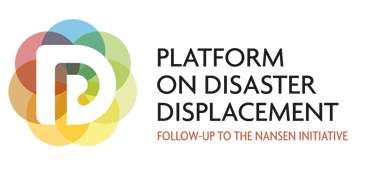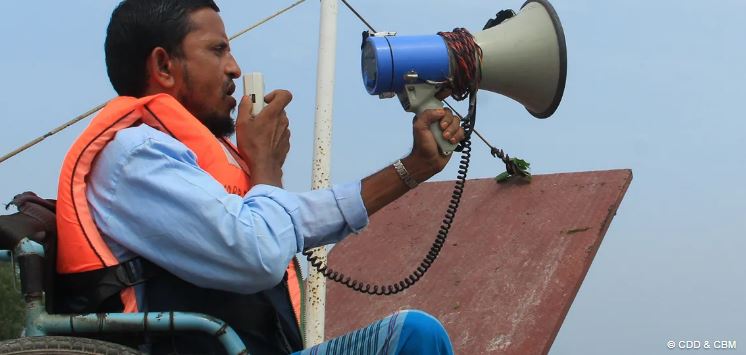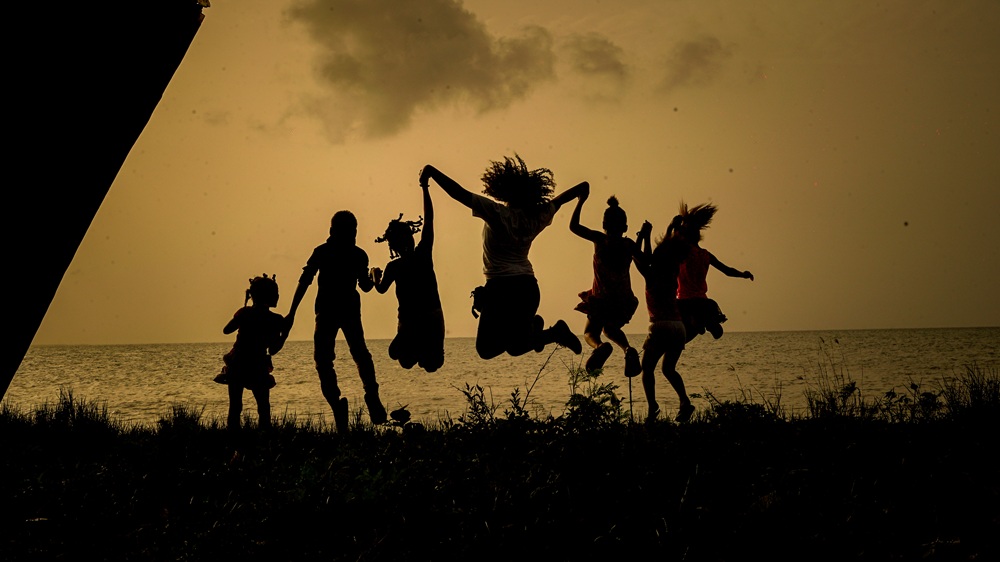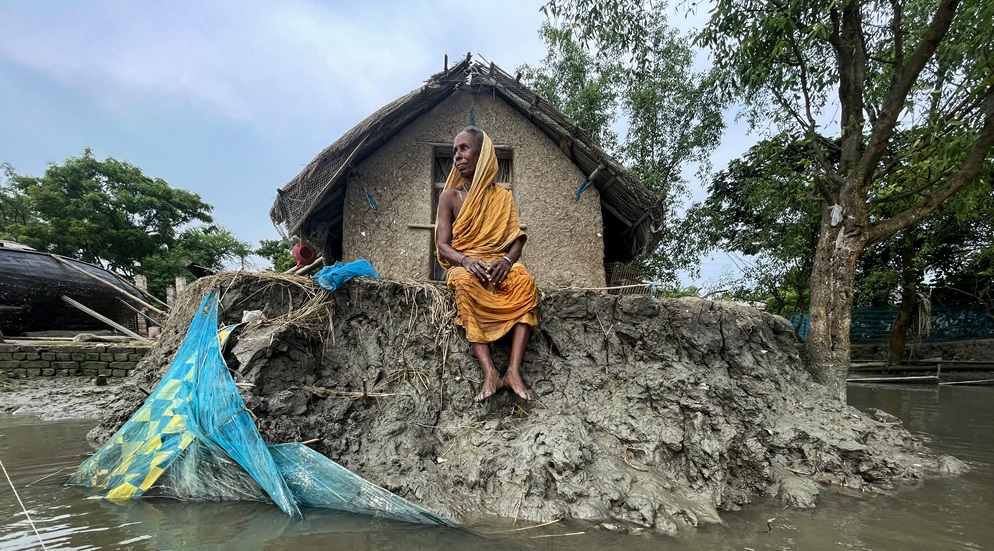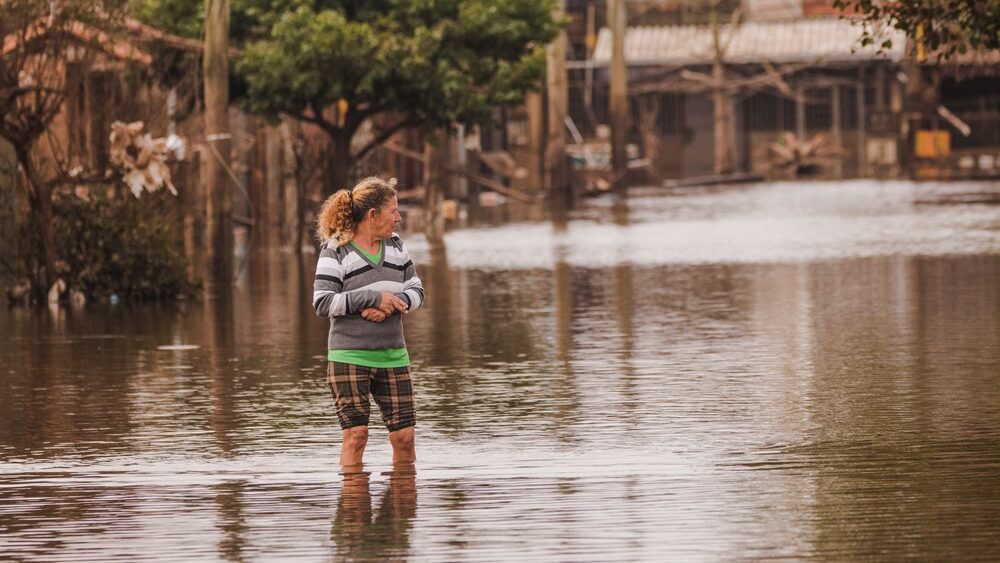Promising Practices of Disability Inclusion in Addressing Disaster Displacement
This article by Yusra Uzair, Louisa Yasukawa and Nazmul Bari, was originally published in the Forced Migration Review (FMR) Issue 69, in March 2022.
Persons with disabilities are disproportionately affected by climate change and disaster displacement but promising examples of more inclusive planning and responses are emerging.
As our understanding of displacement in a changing climate continues to grow, so too does our awareness that its effects are not evenly felt. An estimated one billion people – 15% of the globe’s population – are living with a disability. The social, economic and political inequalities that they experience heighten their exposure and vulnerability to the effects of climate change and disaster displacement. They face unique challenges before, during and after being displaced, as they are often excluded from evacuation processes and encounter barriers in accessing support. For example, according to a representative of persons with disabilities in the Somalian city of Beledweyne, which is regularly affected by flood displacement:
The limited availability of data on persons with disabilities compounds these challenges and makes it difficult to assess the inclusivity of preparedness activities and responses to displacement.
The Sendai Framework
The Sendai Framework for Disaster Risk Reduction 2015–2030 was the first international disaster risk reduction (DRR) agreement to make significant reference to disability. It emphasised the need to empower persons with disabilities to play a leading role in the assessment, design and implementation of DRR measures. It encourages stakeholders to uphold the principles of universal design, ensure disaster information is accessible, and collect data that is disaggregated by gender, age and disability.
A total of 187 States adopted the Sendai Framework, and its provisions on disability have been incorporated into regional frameworks, declarations and national laws in countries such as Japan and Indonesia. Despite these strong commitments, however, implementation has been slow. A review of implementation in Europe, for instance, found that commitments on disability inclusion had yet to be translated into inclusive accessible practices. Similar assessments at the global level have also highlighted the need for increased efforts to build governments’ capacity to collect data disaggregated by disability.
But there are signs of progress. The Disability-inclusive Disaster Risk Reduction Network (DiDRRN) – a consortium of like-minded organisations of persons with disabilities (OPDs) and ‘mainstream’ and disability-focused development and relief organisations – aims to secure the meaningful participation of persons with disabilities in DRR policy and practice in line with Sendai Framework commitments. It has achieved several milestones in the Asia-Pacific region, including training over 1,300 persons with disabilities in inclusive DRR-related skills, sensitising over 6,600 DRR stakeholders on risk and disability, and enhancing the leadership of 26 OPDs in DRR engagement. DiDRRN also produces practical and accessible resources on disability-disaggregated data collection. Promising examples from Bangladesh and the Philippines demonstrate how national and local actors are taking steps to reduce displacement-related risks and strengthen preparedness.
Building community resilience in Bangladesh
In Bangladesh, one of the most disaster-prone countries in the world, the Centre for Disability in Development (CDD) led a project in 2019 to raise awareness and preparedness in the Baharchora Union locality that has experienced five major cyclones in the last 15 years. CDD collaborated with local authorities and community members to facilitate a series of disaster simulation exercises that promoted inclusion of persons with disabilities in local disaster risk management (DRM) activities. Going through critical procedures – including risk assessment, accessible early warning systems and evacuation protocols – provided an opportunity for participants to identify most-at-risk groups, and to better delegate responsibilities in emergency situations to ensure no one is left behind.
In other cases, disability-inclusive community resilience requires comprehensive interventions to address the needs of persons with disabilities before a disaster strikes. CDD, international NGO CBM and local NGO Gana Unnayan Kendra worked together to develop a programme in the flood-prone Gaibandha District to strengthen local capacity and put persons with disabilities and their representative self-help groups at the centre of DRR. Community-based disability-inclusive DRR action plans were prepared with the meaningful participation of persons with disabilities. Persons with disabilities received assistive devices and therapeutic services, which supported their participation in the DRR process.
Households of persons with disabilities who were most at risk received livelihood support, which enabled them to use part of their income to fortify their houses against floods. Local flood shelters were made accessible, and an accessible rescue boat was built for use by all community members, including those with disabilities, in order to evacuate safely. The Gaibandha model recommends five interlinked interventions to build resilient and inclusive communities, such as advocating with the local government for inclusive DRM. Community-based approaches that enable persons with disabilities to engage and participate in planning processes demonstrate long-term effectiveness in changing perceptions about disability.
Enhancing evacuation processes and data collection in the Philippines
The Philippines’ National Disaster Risk Reduction and Management Plan (2020 – 2030) emphasises that the needs of persons with disabilities must be met, and their capacity and knowledge recognised and strengthened. In practice, efforts have been made to enhance the inclusivity of evacuation processes, particularly at the local government level.
The Cebu Disability-inclusive Disaster Risk Reduction Network, for example, leads a team of persons with disabilities in training public servants on how to mainstream inclusion into disaster preparedness. In addition to teaching government officials the essentials of sign language, trainers outline simple solutions that can be taken to enhance accessibility. This includes adding a flashing light to early warning alarms to assist visually impaired persons, making evacuation routes accessible to persons with reduced mobility, and ensuring disaster information is available in audio or large text format. In addition, they conduct accessibility audits in buildings around the province.
Efforts have also been made to encourage more systematic collection of data on persons with disabilities. Launched in 2018, the Inclusive Data Management System (IDMS) is designed to identify persons with disabilities and collect data on their needs, vulnerabilities and capacities before, during and after disasters. The objective is to support the establishment of a comprehensive data management system at the municipal or city level and enhance systems to address the specific needs of persons with disabilities in all phases of DRR.
Key challenges and ways forward
During consultations with practitioners working with persons with disabilities displaced by disasters in Ethiopia, Nepal and Somalia, they highlighted several challenges that are hindering effective implementation of commitments on disability. Chief among them is the common misconception that disability-inclusive DRR is complex and resource-intensive, which means it is less likely to be prioritised. The examples from Bangladesh and the Philippines demonstrate, however, that improving accessibility often does not require novel or complex approaches; many of the solutions are simple but just require early action. As noted by a practitioner from Nepal:
We have to focus more on preparedness… so we have enough time to think about accessibility, safety and security, and other issues persons with disabilities may face.”
In addition to reducing the risk of death or injury, addressing issues of accessibility before the emergency response phase will also be more efficient and less costly in the long term. The principle of addressing the needs of people with disabilities at design stage is relevant across the board and across the different stages of displacement; it should be incorporated into WASH, education and health facilities in disaster settings so that persons with disabilities can continue to access services throughout their displacement.
At the same time, practitioners noted the tendency of government and humanitarian actors to see persons with disabilities as a homogenous group – but the risks, needs and experiences of persons with disabilities are diverse. It is therefore essential to adopt an intersectional approach and understand how someone’s gender, age, ethnicity, type of disability, socioeconomic status and other characteristics affect the way they are impacted by displacement. Expanding the collection of data disaggregated by disability can assist in better understanding their diverse needs and in implementing appropriate interventions.
Finally, practitioners emphasised that meaningful participation and consultation of persons with disabilities in planning and decision-making on displacement are still widely lacking. The examples from Bangladesh and the Philippines highlight the key role persons with disabilities can play in reducing displacement-related risks, including through training and advocacy projects. Empowering communities to lead DRR activities and climate adaptation strategies by helping to raise awareness about disability as a complex and dynamic concept also contributes to fighting the stigma and misconceptions faced by persons with disabilities.
Cover photo: © CDD & CBM
